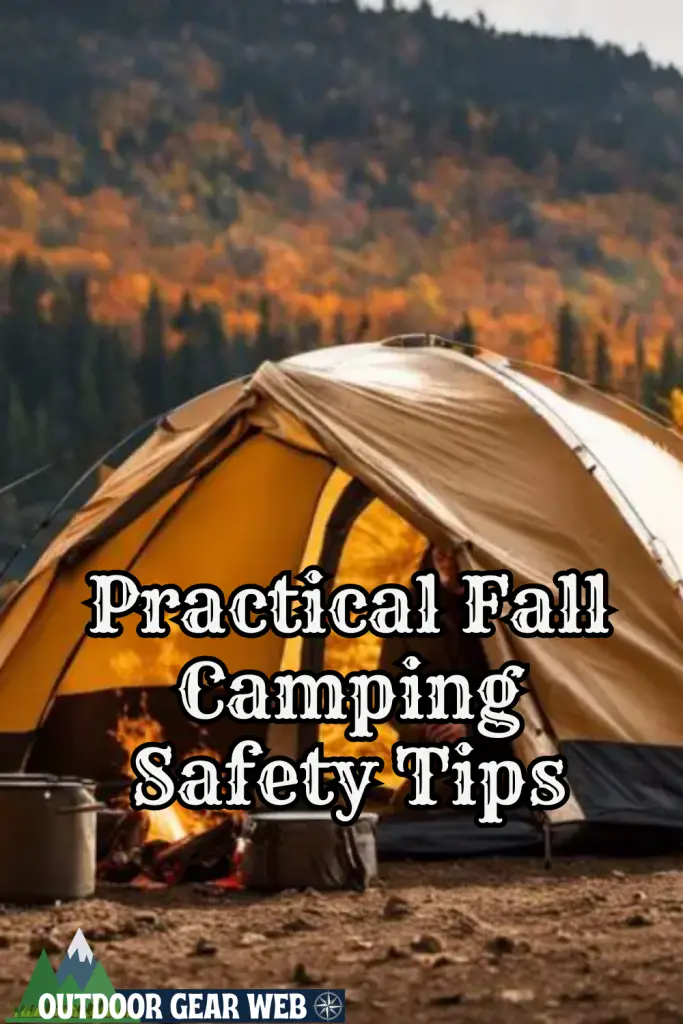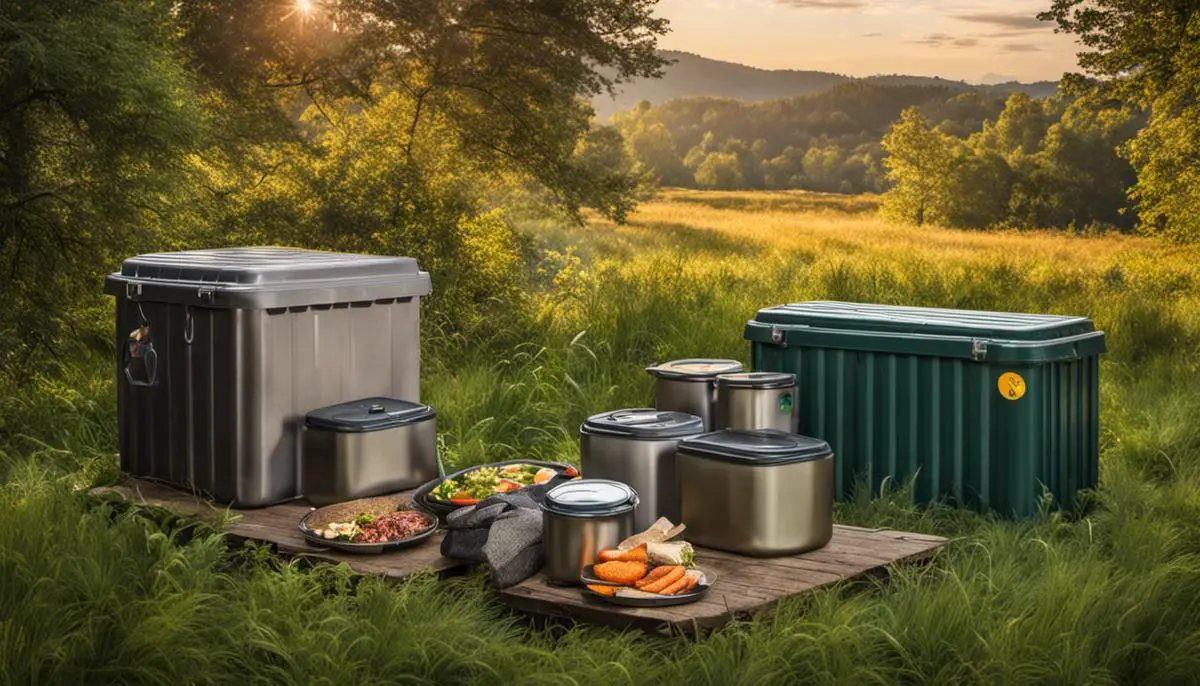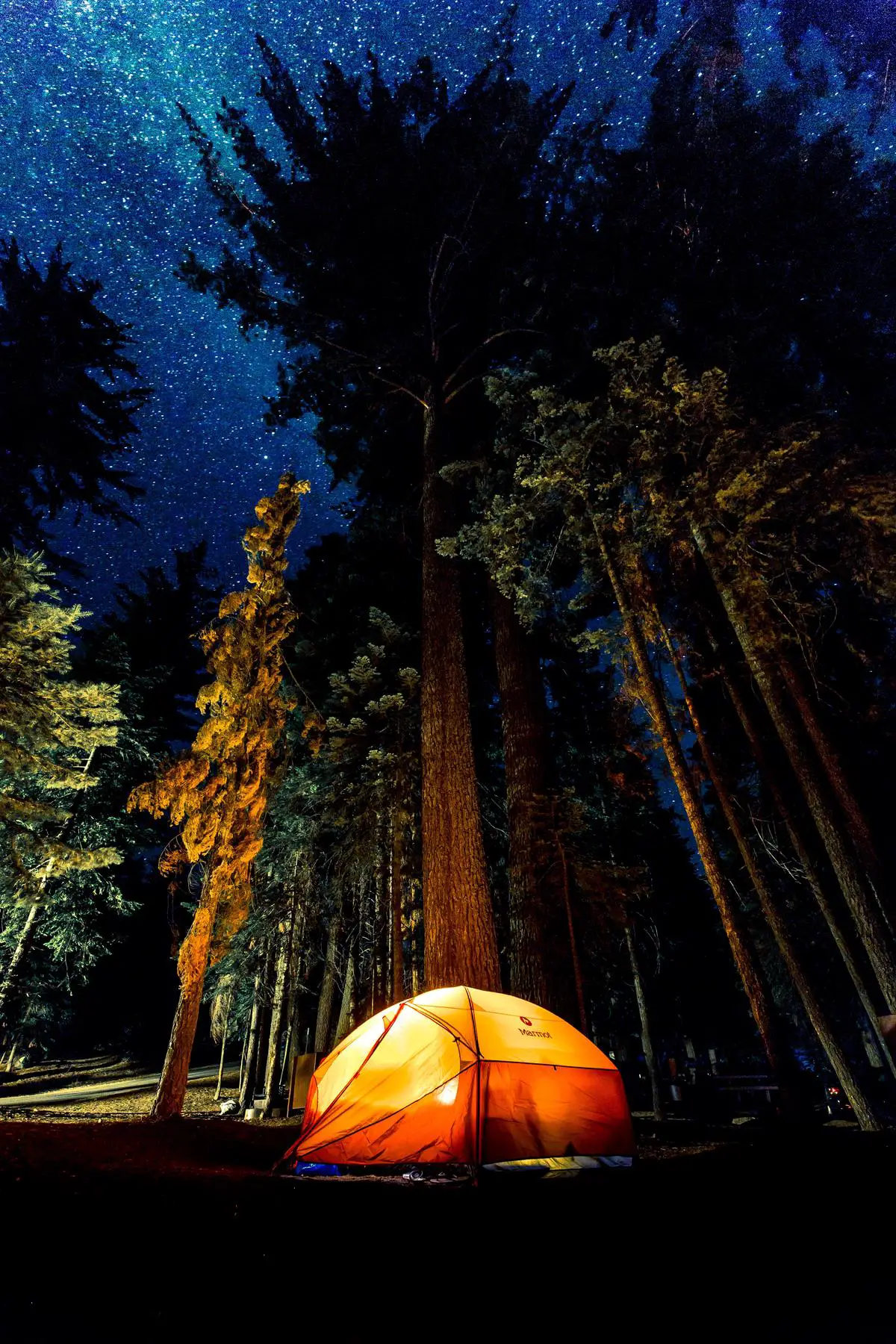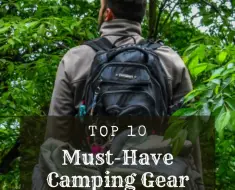
As the vibrant hues of autumn leaf-peeping season beckon outdoor enthusiasts to explore trails and campgrounds, it’s important to bear in mind the essentials of fall camping safety. From contemplating potential weather changes to having a profound awareness of area wildlife and committing to food safety practices, a well-prepared camper can truly enjoy all the autumnal outdoors have to offer. Bringing appropriate clothing, equipping yourself with a weather-resistant tent, and ensuring your campfire practices adhere to safety protocols are just some ways to gear up for unpredictable climates. At the same time, being knowledgeable about local wildlife helps you coexist respectfully with them, and stringent food preparation and storage methods safeguard against potential health hazards and unwanted animal attention. Keeping all of these fall camping safety tips in mind will help you have an amazing fall camping trip.
Check out these best places for colorful fall camping
Fall Camping Safety: Preparing for Weather Changes
Understanding Fall Weather Changes
Weather changes are a frequent occurrence during the fall, which may range from moderate to freezing temperature drops, unexpected rain showers, or even early snow in some areas. To prepare for these changes, familiarize yourself with the typical weather patterns of your camping spot for the duration of your stay. This information is readily available from weather forecast websites or apps.
Appropriate Clothing for Fall Camping
One of the major guidelines for fall camping is dressing appropriately. Layers are key during the fall, as they allow you to adjust your clothing to suit the fluctuating temperatures. Start with a moisture-wicking base layer to keep sweat and dampness away from your skin. Your middle layer should be insulative such as a fleece jacket or wool sweater to maintain body warmth. Protect yourself from wind, rain, and snow with a waterproof or resistant outer layer. Don’t forget warm socks, gloves, and a hat or cap to cover your head.
Importance of a Weather-Resistant Tent
To prepare for weather changes, a good quality, weather-resistant tent is imperative. The tent should be able to withstand windy conditions, rain, and potential frost or snow. Look for a tent that has a strong, durable frame, and is made with waterproof material. If camping in an area where it snows, a four-season tent would be the best option, as they are designed with sturdier poles and fewer mesh panels than three-season tents.
Safe and Controlled Campfire in Changing Weather
The campfire is a crucial part of the camping experience, not just for cooking and warmth, but for creating that classic camping ambiance. Safety, however, should never be ignored. Always build your campfire downwind from your tent to prevent smoke from blowing into it and to reduce the risk of tent fires. Weather changes, especially strong winds, can cause sparks to fly and start wildfires, so keep your fire small and manageable, and never leave it unattended. Before retiring for the night or leaving the campsite, completely extinguish the fire. Pour water over the embers and stir it with a stick to ensure all the hot coals cool down.
Considerations for Fall Camping
Other fall camping considerations include bringing an insulated, self-inflating sleeping pad, a sleeping bag rated for the lowest possible temperature you expect to encounter, and always having a backup heating source. Additionally, pack food and water that would last in case you wind up staying longer than expected due to unexpected weather changes. Remember, being prepared will not only make your fall camping trip more comfortable but also safer.

Here are some useful items to pack on your fall camping trip.
Fall Camping Safety: Wildlife Awareness and Handling
Understanding Potential Wildlife Encounters During Fall Camping
It’s crucial to identify the wildlife you might encounter when camping in the fall. Common animals include bears, coyotes, raccoons, snakes, and insects like ticks. Research the behavior of these animals and how they react to human presence so you can anticipate potential encounters. Knowledge of animal behavior can help you avoid unnecessary contact and give you confidence in your ability to react appropriately if an encounter occurs.
Precautions to Avoid Attracting Wildlife
Keeping your camp clean is paramount to avoid attracting wildlife. Never leave food, coolers, or garbage outside unattended. Pack all food in airtight, bear-resistant containers and store them away from your tent. If possible, prepare food out of your sleeping area to reduce lingering food odors. Dispose of garbage in lockable, wildlife-resistant containers, or pack it out of your camping area. Don’t forget to wash dishes and cooking utensils immediately after use.
What To Do If You Encounter Wildlife
If you encounter wildlife, always remember to maintain a safe distance. Do not feed, approach, or try to take selfies with the animals. For larger animals like bears or moose, refrain from sudden movements. Slowly back away while speaking in a calm, low-tone voice. If a bear approaches you, make yourself appear big by standing on your toes and lifting your arms. Use bear spray if the animal continues to approach.
For smaller animals, like raccoons or squirrels, shoo them away without getting too close. If confronted by a snake, freeze and allow it to leave the area. Always remember your safety comes first, and contact the park rangers if you feel threatened.
Respecting Wildlife
Respect for wildlife is not only a matter of safety, but also ethics. Animals in their natural habitat should be appreciated from a distance. Remember, you are a guest in their home. By observing wildlife responsibly, we can maintain the integrity of their environment and their way of life, promoting wildlife conservation for future generations to enjoy.
Importance of Wildlife Awareness
Finally, understanding and respecting wildlife is a critical part of camping, especially fall when certain animals are preparing for hibernation and may act aggressively. Knowledge about the types of wildlife in the camping area and how to handle potential encounters is a must-have tool in every camper’s kit. It not only ensures safety but also promotes a harmonious and enjoyable experience with nature.
For the chilly fall evenings check out these fleece jackets.
Fall Camping Safety: Safe Food Preparation
Safe Food Preparation and Storage During Camping
When camping in the fall, it’s crucial to maintain food hygiene to prevent foodborne illnesses and store your food properly to avoid attracting wildlife. Here’s how you can safely prepare and store food when camping:
- Maintain Cleanliness:
- Always wash your hands before and after handling food. If you don’t have access to running water, use wet wipes or sanitizers. Keep your cooking utensils and surfaces as clean as possible to prevent cross-contamination.
- Safe Cooking:
- Cook food thoroughly to kill any pathogens. Pack a food thermometer to check the internal temperature of the food. Cook burgers to an internal temperature of 160ºF and chicken to 165ºF.
- Keep Cold Foods Cold:
- Use a cooler to store perishable foods like meat, dairy, and eggs. Keep the cooler temperature below 40ºF to prevent bacterial growth.
- Separate Raw and Cooked Food:
- Store raw and cooked food separately to prevent cross-contamination. Use different cutting boards and knives for raw and cooked food.
- Leftovers:
- If you have any leftovers, cool them quickly and store them in the cooler. Consume leftovers within 2 days.
Preventing Wildlife from Getting to Your Food
Storing food safely during camping not only preserves the food for your use but also prevents attracting wildlife to your camp.
- Bear Country:
- If you’re camping in bear country, use bear-resistant food containers. These are specifically designed to keep bears from smelling and accessing your food.
- Store Food Out of Sight:
- In areas with smaller wildlife like raccoons or squirrels, store your food in airtight containers in your car or hang it at least 10 feet high and 4 feet away from the trunk of a tree.
- Clean the Cooking Area:
- After preparing and eating your food, clean up the cooking area thoroughly. Dispose of food waste properly and never leave food or wrappers out as they can attract animals.
Learn more about appropriate food storage now.
By following these guidelines, you can ensure both your safety and the safety of wildlife by keeping your food safe and secure.

Final Thoughts on Practical Fall Camping Safety Tips to Remember
Camping during fall is truly a remarkable experience. The stunning play of colors in the landscape and the crisp air all contribute to making it one unforgettable adventure. However, it is pertinent to remember that this enjoyable encounter with nature balances on the fulcrum of safety protocols. Preparing for sudden weather changes, respecting wildlife, and adhering to food safety norms can make all the difference between a memorable expedition and an unpleasant incident. Bringing this knowledge into practice amplifies the joy of basking in the season’s scenic grandeur while ensuring a safe, respectful, and eco-friendly camping experience. As the old saying goes, “An ounce of prevention is worth a pound of cure,” so be prepared and embark on an incredible journey into the heart of autumn’s splendor! Make sure to follow these practical fall camping safety tips.

















